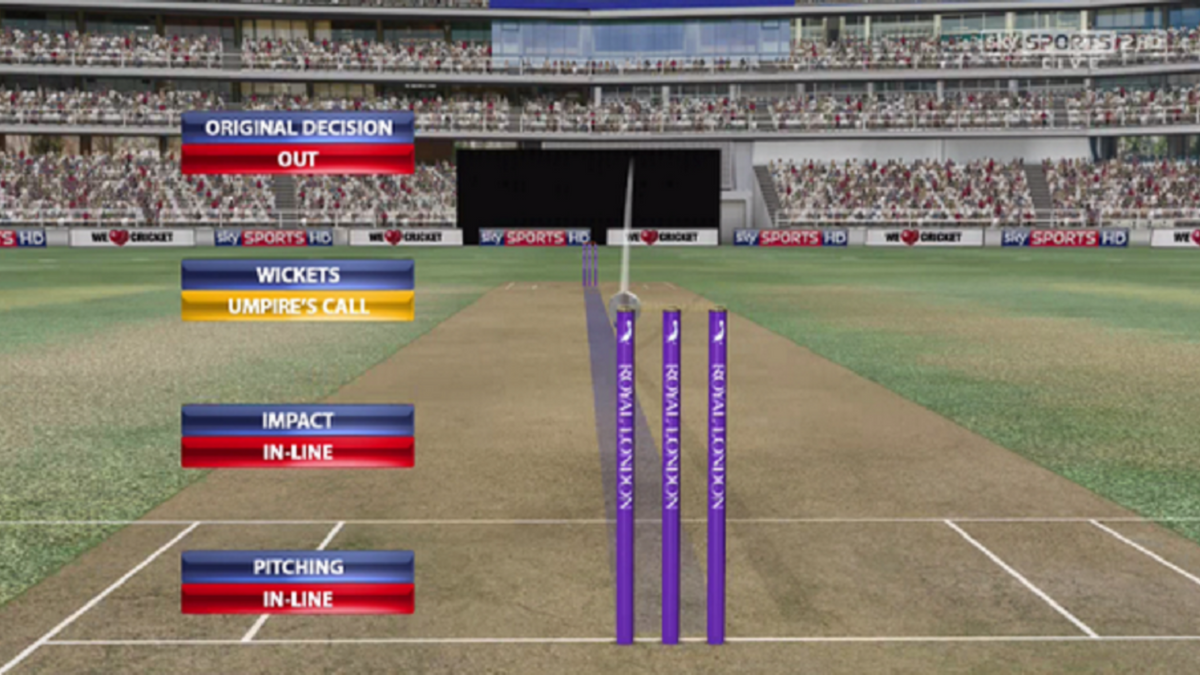
Gore Vidal presumably wasn’t thinking of cricket broadcasting when he said, “Television is now so desperately hungry for material that they’re scraping the top of the barrel”. But he could have been. Yas Rana pens down the best and worst broadcast innovations in issue 15 of the Wisden Cricket Monthly.
First published in issue 15 of the Wisden Cricket Monthly
THE BEST
Full pitch delivery
One of the challenges of broadcasting cricket to the masses is to bring you as close to the action as possible. In the most literal way possible, the pitch report does just that. A relatively early innovation, immortalised by Tony Greig shoving keys, pens and who knows what else into the surface to determine its character, viewers have been accustomed to seeing pundits comment on a pitch’s “even covering of grass” for decades but almost always conclude it’s a “bat first pitch”.
Eyes like a hawk
“There’s no way Hawk-Eye can tell if a delivery is going to skid a bit more than normal or hit a crack, or a damp or worn patch, or a bit of grass on the wicket.” It’s fair to say Dennis Lillee wasn’t convinced by ball-tracking technology when it emerged at the turn of the century. Now part of the in-game decision-making process, it’s easy to forget how revolutionary Hawk-Eye was when it was first used by Channel 4 in 2001. While, as the brains at Hawk-Eye admit, the technology has never been 100 per cent accurate, visualising the ball’s expected trajectory was a significant game-changer which paved the way for DRS.
Head in the game
You’ve heard it from commentators countless times before: the camera doesn’t adequately convey the true pace of the ball. One of the gimmicks deployed in the first year of T20 cricket in 2003 tried to counter that problem head on. The player cam, literally a camera attached to the batsman’s helmet, helped the viewer truly gauge a bowler’s pace years before the invention of the Go-Pro. Unfortunately, presumably due to its clunky, slightly amateur aesthetic, it was quickly phased out of the viewing experience.
THE WORST
A little less conversation (a little more action please)
Another by-product of T20. Mid-game interviews are a great idea in theory but in reality they generally consist of overly earnest questions being met with a hint of annoyance as the player tries to focus on the task in hand. After all, these are professional sportspeople with a job to do. The flip side of that, when an overexcited pundit essentially demands a party trick from a player, can be even more irritating. See Andrew Flintoff’s Elvis impersonation or Tim Ludeman’s Benaud imitations in the Big Bash as prime examples.
Fox: The home of witty banter
In the recent series between Australia and India, Fox Cricket broadcasted entire overs without any commentary; the idea being that viewers could instead listen to the hilarious banter on offer from the players, often shared on social media with a ‘sideways laughter’ emoji. Yes, Tim Paine’s quip “I know he’s your captain but you can’t seriously like him as a bloke” to Murali Vijay was quite funny, but much of the rest was not. The forced laughter from the commentary team made the experience all the more excruciating.
It was Rishabh Pant’s turn for some fun on the stump mic today… #AUSvIND pic.twitter.com/RS8I6kI55f
— cricket.com.au (@cricketcomau) December 29, 2018
Roving Nasser
During last year’s charity fundraiser between an ICC World XI and West Indies at Lord’s, a fixture that was dubiously awarded international status, Nasser Hussain took to the field to commentate, microphone in hand, at fly slip. An innovation that is unlikely to be repeated, viewers were left hoping for the batsmen to flash hard at one so the ball would go in Hussain’s direction. The experiment took a hammering on social media, with several people pointing out that while several of the World Cup qualifiers were not deemed full internationals, this unusual spectacle was.








